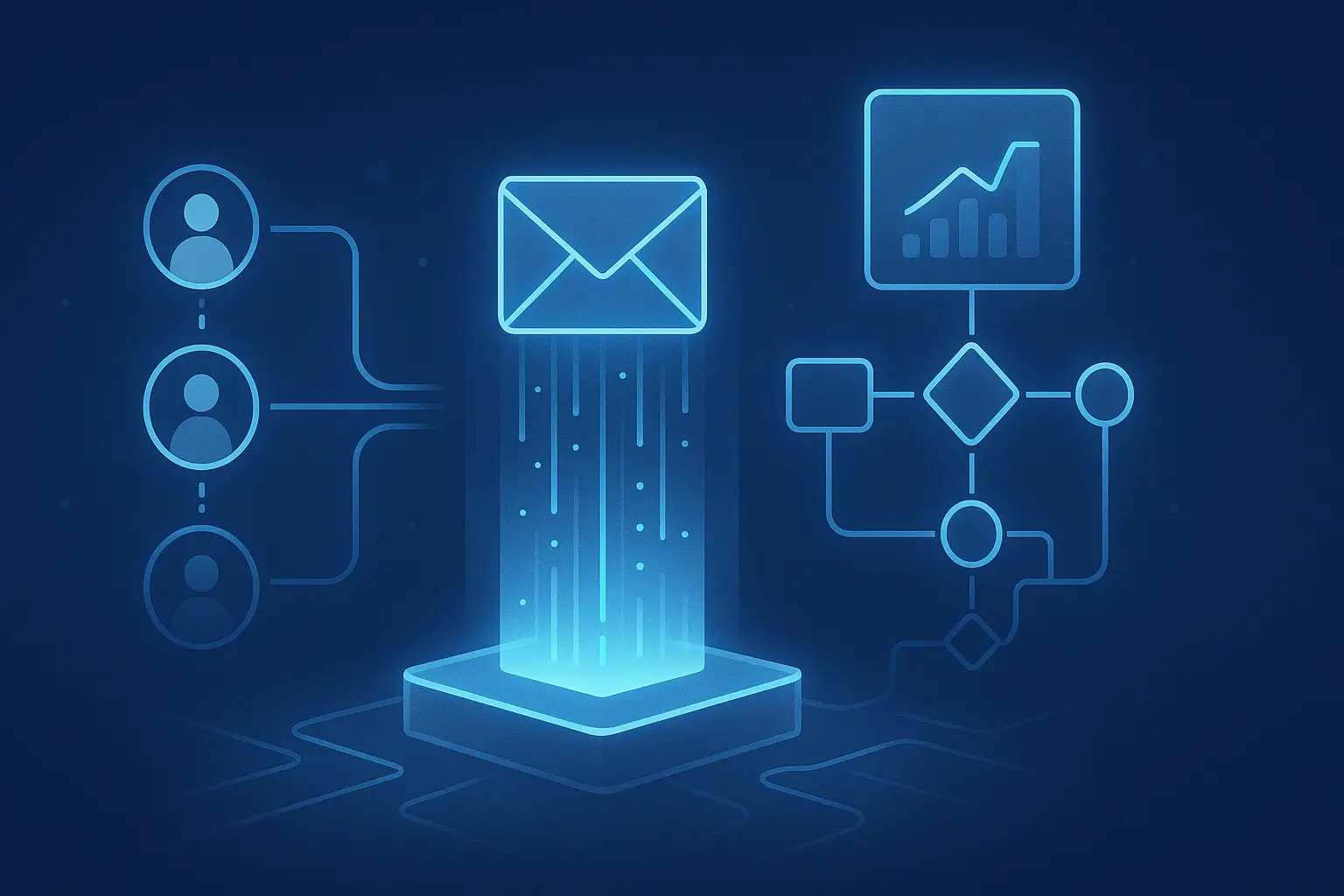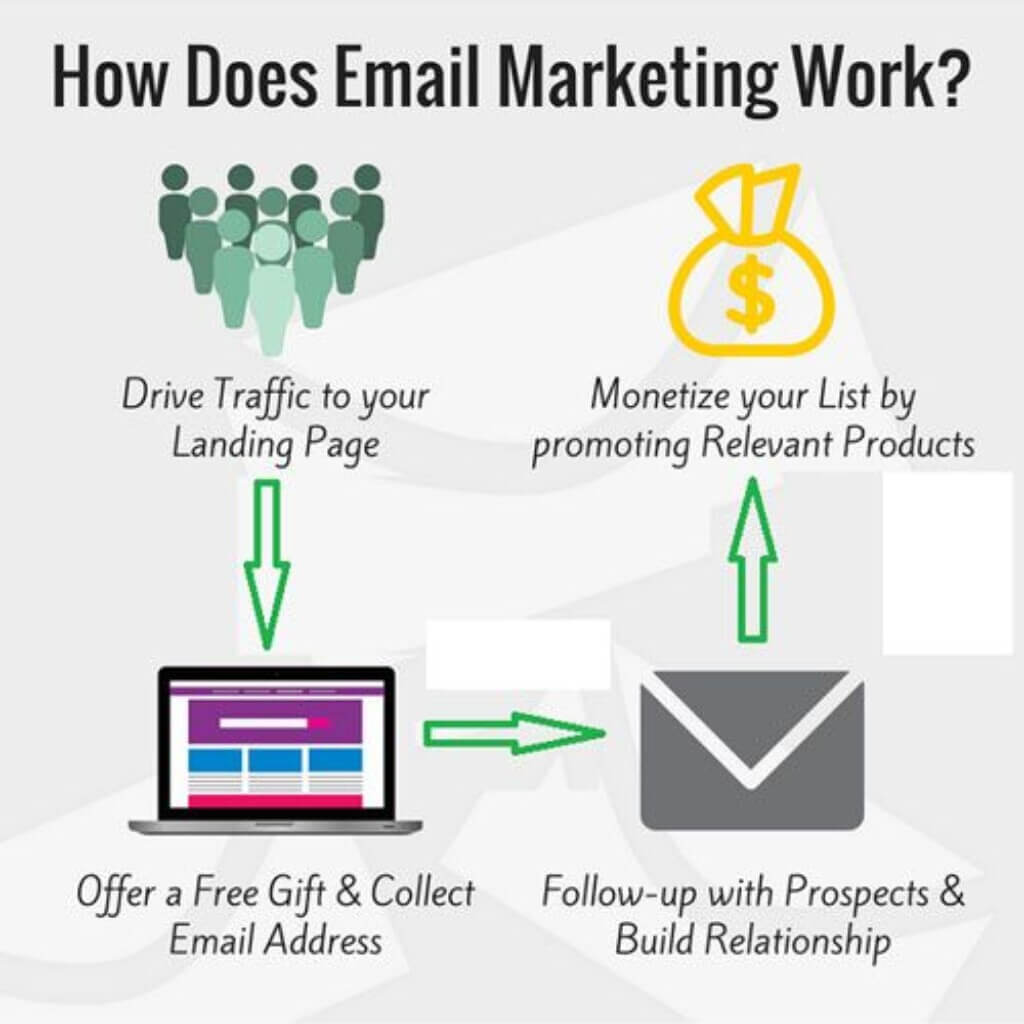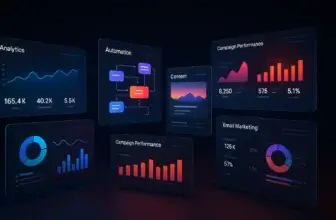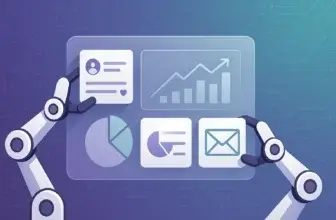
Introduction
If you’re looking to build lasting relationships, connect with your audience, and increase revenue, mastering email marketing best practices is essential.
Unlike social media or paid ads, email gives you direct access to your subscribers’ inboxes. It allows you to engage your audience with personalized content, nurture leads, and guide potential customers toward making a purchase, all while delivering one of the highest ROIs of any digital marketing channel.
Email marketing has come a long way since its early days in the late 1970s. Today, it’s a data-driven, deeply personalized communication channel used by everyone from global retailers to solo creators. According to HubSpot, over 80% of marketers say email is their top channel for customer acquisition and retention, and that’s not by accident.
In this guide, you’ll learn:
- What email marketing is and how it works
- Who it’s best for and why
- Top tools and expert tips
- Real-world examples that work
- 10 reader-focused FAQs to clarify every common concern
And if you’re choosing a tool, don’t miss our breakdown of the Best Email Marketing Platforms.
Let’s dive in!
Benefits of Email Marketing
Email marketing isn’t just popular because it’s easy to get started; it’s powerful because it delivers real, measurable results. Whether you’re nurturing leads or reactivating past customers, email consistently proves to be one of the most effective channels out there.
Here’s why you’ll love it:
💰 Incredible ROI
$36 back for every $1 spent. That’s the average return on investment email marketing generates. Few channels even come close to this level of performance. With the right tools and tactics, you can turn subscribers into loyal buyers without breaking the bank.
📬 Direct Line to Your Audience
Unlike social media, where algorithms control visibility, your emails land directly in someone’s inbox. You’re not competing with trending memes or video ads; your message gets full attention.
👤 Personalization Made Easy
You can send targeted messages based on behavior, interests, or past purchases. This kind of segmentation boosts engagement, increases conversion rates, and shows subscribers you understand their needs.
🔁 Automation = Efficiency
Use tools to automate welcome emails, abandoned cart reminders, re-engagement flows, and more. Automation not only saves time but also ensures your emails are timely and relevant.
📊 Data-Driven Decisions
With built-in analytics, you’ll always know what’s working. Track:
- Open rates
- Click-through rates
- Bounce rates
- Conversions
These insights help you fine-tune future campaigns and maximize your impact.

Who Should Use Email Marketing and Why
Email marketing isn’t limited to large corporations. It’s incredibly versatile and useful for almost any business or creator looking to grow and maintain a loyal audience.
| 👥 User Type | 💡 How They Use It |
|---|---|
| E-commerce Brands | Promotions, cart reminders, product launches |
| B2B Companies | Lead nurturing, newsletters, event invites |
| Online Educators | Course onboarding, content drips, upsells |
| Content Creators | Digests, affiliate promos, community updates |
| Nonprofits & Orgs | Donation drives, impact stories, volunteer outreach |
🛍️ E-commerce Brands
🛒 Why? Promote new products, recover abandoned carts, and send exclusive discounts.
Example: Tools like Klaviyo are ideal for e-commerce businesses thanks to deep Shopify integration and powerful automation.
🏢 B2B Companies
Why? Nurture leads over time with valuable content and thought leadership.
Use it for: Whitepaper distribution, webinar invites, and follow-up sequences that help you stay top-of-mind during long buying cycles.
🧑🎓 Online Educators and Course Creators
Why? Keep students informed, upsell new programs, and deliver value-packed newsletters.
Bonus Tip: Automated onboarding sequences can dramatically improve course completion rates.
💡 Content Creators & Influencers
Why? Own your audience outside social media platforms and drive traffic to your latest content.
Email types to try: Weekly digests, community updates, and affiliate recommendations.
💖 Nonprofits & Community Organizations
Why? Keep donors in the loop, share impact stories, and encourage recurring support.
Tool of choice: Moosend is affordable and beginner-friendly, making it great for organizations with tight budgets.
How to Implement Effective Email Marketing
You’ve got your audience and a message to share, now it’s time to build an email marketing system that delivers results. Successful email marketing doesn’t happen by chance. It requires strategy, consistency, and the right tools.
Let’s break it down into steps you can follow:
✅ Build a High-Quality Email List
Don’t buy email lists. Instead:
- Use lead magnets (ebooks, discount codes, free trials).
- Add signup forms to your website, blog, or landing pages.
- Capture emails via social media or at events.
Quality matters more than quantity. A small, engaged list will always outperform a large, cold one.
✍️ Create Compelling Content
Your emails need to grab attention and offer real value. Focus on:
- Clear subject lines (keep it short and specific)
- Personalized greetings (first names boost engagement!)
- Clear, benefit-focused copy
- One strong CTA per email (don’t confuse your readers)
🔍 Segment and Personalize
Not every subscriber wants the same thing. That’s where segmentation comes in.
Use criteria like:
- Location
- Past purchases
- Engagement level
- Preferences or behavior
This allows you to send tailored messages that drive higher conversions.
🤖 Automate Smartly
Automate emails that respond to subscriber actions and save you time.
Here are some ideas:
- Welcome emails for new subscribers
- Cart abandonment emails
- Birthday or anniversary emails
- Re-engagement campaigns
Tools like Campaigner or Brevo make this incredibly easy with pre-built automation templates.
🧪 A/B Test for Continuous Improvement
Never stop testing! Use A/B tests to find out what works best:
- Subject lines
- CTA buttons
- Email layout
- Send times
Track the data and let performance guide your decisions.
🛡️ Respect Privacy Laws and Accessibility Standards
Email marketing doesn’t just need to perform; it also needs to comply with legal standards like GDPR, CAN-SPAM, and accessibility guidelines.
Here’s how to stay on the right side of the law (and user-friendly!):
- Always use double opt-ins to confirm permission.
- Avoid deceptive subject lines or hidden unsubscribe links.
- Clearly display your business contact information in the footer.
- Use accessible fonts, alt text for images, and sufficient contrast for readability.
Respecting these principles builds trust with your audience and protects your brand from potential fines or reputation damage. Plus, accessible emails simply perform better, especially with mobile users or those using screen readers.
Examples of Successful Email Campaigns
One of the best ways to improve your own email marketing strategy is to learn from what others have done well. Below are real-life campaign styles that consistently drive results, plus a breakdown of why they work.
🛒 Abandoned Cart Reminder (E-commerce)
Brand Example: Online Retailers Using Klaviyo
Why it works:
- Sends 1–3 emails within 24 hours of cart abandonment
- Includes product images, prices, and a clear CTA
- Adds urgency with low-stock messages or limited-time offers
🔗 Want to build one yourself? Klaviyo is a top-rated tool for automated cart flows. You can also explore more functions in our review.
🎉 Welcome Series (B2C and SaaS)
Brand Example: SaaS platforms using Brevo
Why it works:
- First email: thank you + brand intro
- Second email: best-selling features or offers
- Third email: testimonials or case studies
- Every message reinforces trust and sets expectations
✨ Pro tip: Brevo makes it super easy to design welcome automations with drag-and-drop flows.
🗓️ Re-engagement Campaign (All industries)
Brand Example: Moosend Clients
Why it works:
- Sent to inactive subscribers after 60+ days
- Offers exclusive discounts or surveys
- Option to update preferences or unsubscribe
📌 This helps clean your list and improve deliverability. Learn more in our Moosend review.
📚 Educational Content Drip (Coaches and Content Creators)
Brand Example: Course creators using Campaigner
Why it works:
- Delivers 3–7 lessons over time
- Builds anticipation and routine interaction
- Leads naturally to a paid course or product upsell
📈 Campaigner offers campaign tracking and advanced segmentation to fine-tune every email. Explore more here.
Top Email Marketing Tools to Power Your Strategy
There’s no shortage of email marketing tools, but choosing the right one can make or break your campaigns. Below are some of the best platforms available, each with unique strengths and ideal use cases.
| 💡 Tool | 🔍 Best Usecase | 🔗 More Info |
|---|---|---|
| Klaviyo | E-commerce automation, dynamic product feeds | Read our review |
| Campaigner | Segmentation, advanced automation | Read our review |
| Brevo | All-in-one email + SMS marketing | Read our review |
| Moosend | Startups, small businesses, nonprofits | Read our review |
With so many email marketing tools available, choosing the right one depends on your goals, team size, and level of experience. Ask yourself:
- Do I need e-commerce integrations (like Shopify or WooCommerce)?
- How advanced should my automation be?
- What’s my budget, and is pricing based on features or contacts?
- Do I need CRM features or SMS add-ons?
Conclusion
Email marketing remains one of the most powerful tools in your digital strategy toolbox, and now, you’re equipped to use it like a pro.
From building a quality list and writing irresistible subject lines to automating personalized flows and tracking real-time analytics, the potential of email marketing is unmatched when you follow the right practices.
Here’s what to keep in mind:
- Craft emails that are useful, timely, and human
- Segment and personalize for better targeting
- Use automation to scale with consistency
- Continuously test, analyze, and optimize
Whether you’re an e-commerce store, a B2B business, a nonprofit, or a creator, email marketing can help you build lasting relationships and boost conversions, all while staying cost-effective.
Don’t forget, the right platform can make a world of difference. Not sure where to start?
Visit our Best Email Marketing Tools guide for in-depth reviews and comparisons of tools like Klaviyo, Campaigner, Brevo, and Moosend.
Ready to send smarter emails that convert? Then it’s time to put these best practices into action. 🚀
FAQ
1. What is the best time to send marketing emails?
Generally, midweek mornings (Tuesday to Thursday between 9–11 AM) perform best. However, testing different send times for your specific audience is key to optimizing engagement.
2. How often should I send marketing emails?
It depends on your audience and content. A good starting point is 1–2 emails per week. Monitor engagement and unsubscribe rates to find your ideal frequency.
3. What are the most important email marketing metrics?
The top KPIs to track are:
- Open rate
- Click-through rate (CTR)
- Conversion rate
- Bounce rate
- Unsubscribe rate
Each gives you insights into how well your emails are performing and where you can improve.
4. How can I improve my email open rates?
Start with irresistible subject lines, personalized content, and clean sender reputations. Segment your list and test send times to boost opens.
5. Is email marketing effective for small businesses?
Absolutely. Email marketing is budget-friendly, easy to automate, and perfect for building customer relationships without the need for a massive team or ad spend.
6. What are common email marketing mistakes to avoid?
Avoid these:
- Buying email lists
- Sending too frequently or infrequently
- Ignoring mobile optimization
- Skipping A/B testing
- Forgetting unsubscribe links
7. How can I avoid my emails going to spam?
Use a reputable email marketing platform, authenticate your domain (SPF, DKIM), avoid spammy language, and keep your list clean and engaged.
8. What does segmentation mean in email marketing?
Segmentation means dividing your list into smaller groups based on behavior, demographics, or purchase history. This helps send more targeted and relevant content.
9. Can I automate my email campaigns?
Yes, and you should. Automation tools like Klaviyo, Brevo, and Campaigner allow you to automate welcome series, cart reminders, birthday emails, and more.
10. How can I grow my email subscriber list?
Offer valuable lead magnets like discounts, ebooks, or templates. Use opt-in forms on your website, blog, and social channels, and always focus on quality over quantity.






